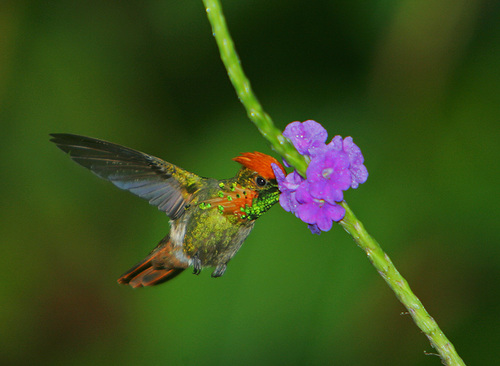
Tufted Coquette
The Tufted Coquette, with its vivid orange crest and elegant feather tufts, flits through South America's tropical lowlands. This petite hummingbird enchants with its nimble maneuvers and bold territorial displays, playing a crucial role in pollination while adding a splash of color to its lush habitat.
3-5 years
Lifespan
2.3 g
Weight
Length: 7 cm
Size
Brown, Red, Black, White, Green, Orange
Color
Least Concern
Conservation Status
Stable
Population Trend
Characteristics
The Lophornis ornatus, commonly known as the Tufted Coquette, is a small hummingbird native to the tropical lowlands of northeastern South America. It features a vibrant green body, a striking orange crest, and a distinctive ruff of black and white feathers. These hummingbirds are known for their agile flight and territorial behavior, often seen darting among flowers to feed on nectar and insects.
Distribution Range of the Tufted Coquette
Lophornis ornatus, commonly known as the Tufted Coquette, is native to South America. It is primarily found in northeastern Venezuela, Trinidad and Tobago, and parts of the Guianas. Its range also extends into northern Brazil.
Tufted Coquette's Habitat
Environmental Conditions
The Tufted Coquette inhabits tropical and subtropical regions, thriving in environments that include humid forests, secondary growth, and gardens. These areas typically have warm, humid climates with abundant rainfall, supporting lush vegetation.
Ecological Niche
As a small hummingbird, the Tufted Coquette is adapted to feed on nectar from a variety of flowering plants, using its specialized long bill to access deep flowers. It plays a role in pollination within its ecosystem. The species also consumes small insects and spiders to supplement its diet, providing essential protein. Its habitat preference includes areas with dense floral resources, often at the forest edge or in clearings where flowers are abundant.
Copyright @ Nature Style Limited. All Rights Reserved.
 English
English